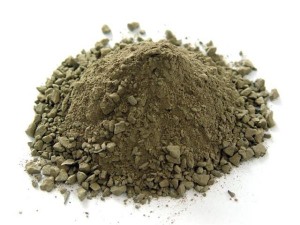What are the aspects of chemical corrosion of ramming materials?
Ramming material refers to unshaped refractory materials that are constructed by ramming (manual or mechanical) and hardened under the action of heating above normal temperature. It is made by adding water or other liquids by mixing. According to the material, there are high alumina, clay, magnesia, dolomite, zirconium and silicon carbide-carbon refractory ramming materials. The chemical corrosion of ramming materials mainly includes the following several aspects.
(1) Corrosion of molten iron. The furnace lining is mainly corroded by carbon in molten iron. SiO2 plus 2C—Si plus 2CO corrodes and smelts gray cast iron, both in ductile iron, and more severe in smelting ductile iron.
(2) Slag invasion. CaO, SiO2, MnO, etc. in scrap iron and steel are easy to form low-melting slag, especially CaO damage is greater. Therefore, attention should be paid to the cleanliness of the raw materials used, and the amount of slag generated by severely oxidized thin-walled waste is more. , It should be used as little as possible or in batches, and less added to each furnace.
(3) Refractory slag. The high melting point slag is caused by the original aluminum. It reacts with SiO2 in the furnace lining to form mullite (3A12O3-2SiO2), and the melting point is 1850 degrees Celsius. Therefore, the aluminum in the original guess should be removed. , so as to avoid the formation of high melting point slag.
(4) Auxiliary agent. If slag coagulant or slag flux is used in the smelting operation, it will aggravate the corrosion of the furnace lining, so it should be avoided as much as possible.
(5) Carbon accumulation. The carbon accumulation is on the ice face of the furnace lining, and even accumulates in the thermal insulation layer. The reason for the carbon accumulation is that oil-impregnated wastes, such as chips, are used in the initial stage of furnace reuse, because the furnace lining is not fully During sintering, CO enters the back of the furnace lining, and the 2CO-2C plus O2 reaction occurs. The generated carbon accumulates in the ice face of the furnace lining or in the pores of the thermal insulation material. When carbon accumulation occurs, it will cause the furnace body to earth leakage, and even the coil will catch fire. flower.

Previous: The conditions required for the selection of intermediate frequency furnace lining materials
下一条: Notes on the knotting process of wear-resistant ramming material
Related Industry Knowledge
- Features and Benefits of Coil Clay
- What are the advantages of a good furnace lining
- Misunderstandings in the use of ramming materials in intermediate frequency furnaces
- Phenomenon analysis of failure of argon blowing of ladle permeable bricks and how to improve the rate of argon blowing
- Where is the consumption reduction and energy saving of breathable bricks reflected?
- How to improve the service life of intermediate frequency furnace lining
- Reasons for damage to intermediate frequency furnace lining and how to solve them
- The performance and advantages of breathable brick
- Analysis of Structural Characteristics of Dispersive Breathable Bricks
- The intermediate frequency furnace charge knotting process needs to pay attention to details sharing
- The conditions required for the selection of intermediate frequency furnace lining materials
- Another function of the ramming material, as a binder
- The effect of using ramming material
- Reasons for the stable quality and performance of breathable bricks
- The use of breathable bricks
- A brief introduction to what materials are needed for ventilation bricks
- Corrosion Loss Mechanism of Rammed Lining in Submerged Arc Furnace
- What are the main reasons for the damage of ladle breathable bricks?
- What is the effect of excessive aggregate particles in the lining of the intermediate frequency furnace?
- 5 benefits of using dry ramming mixes


